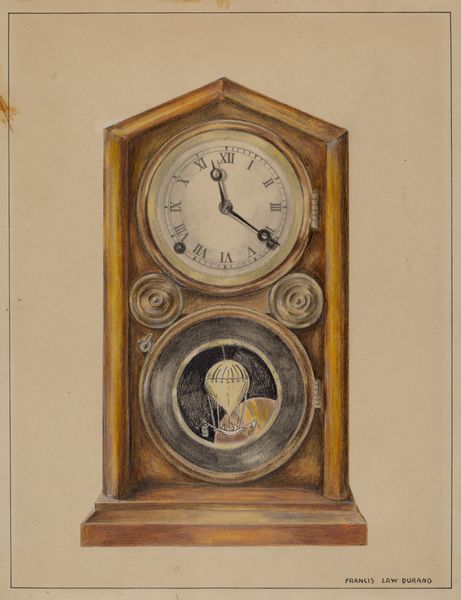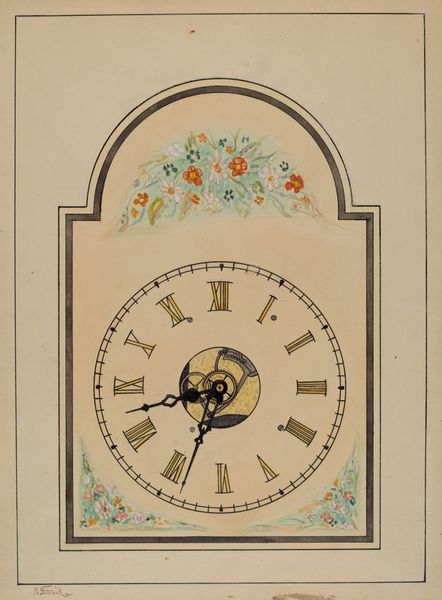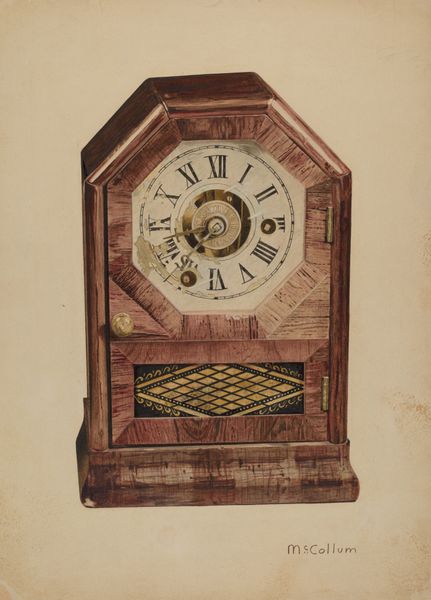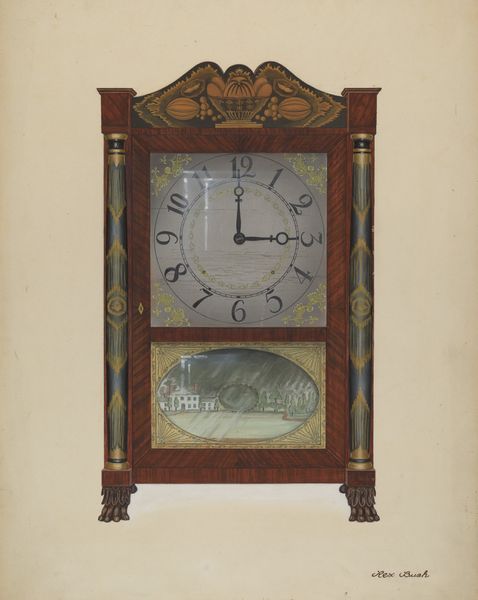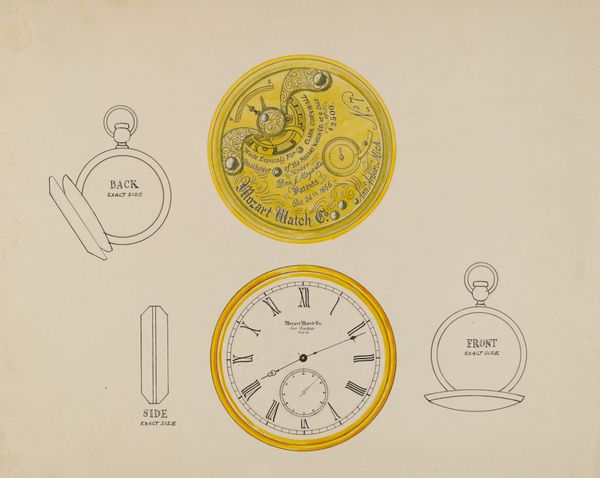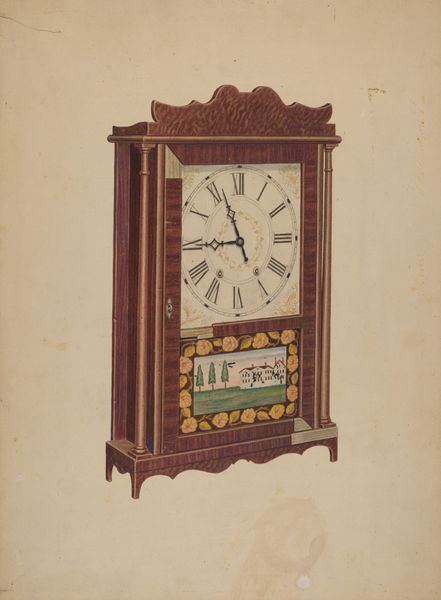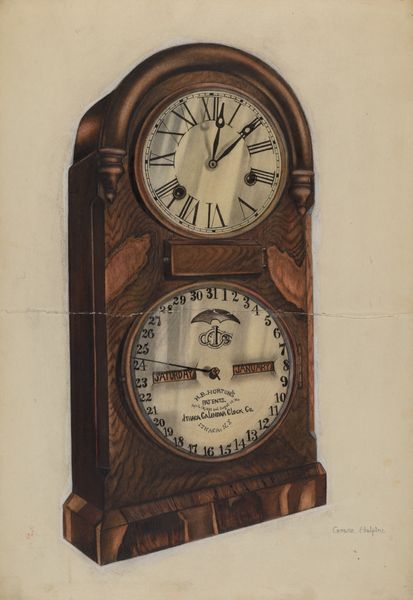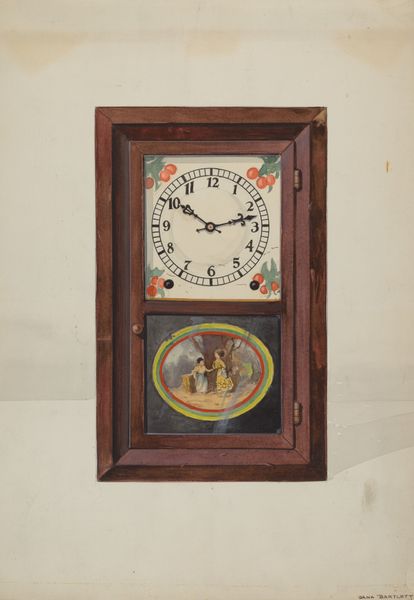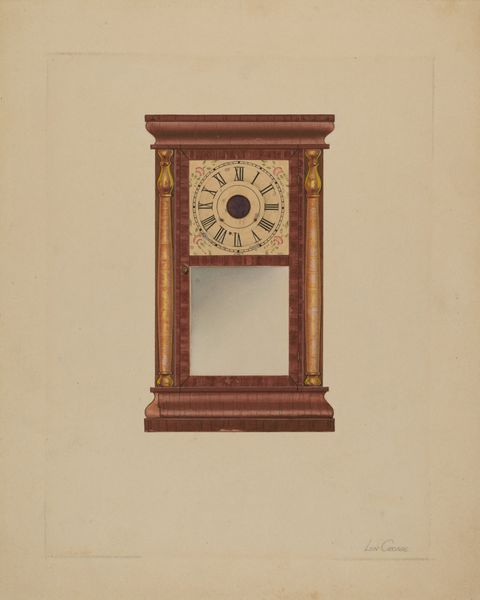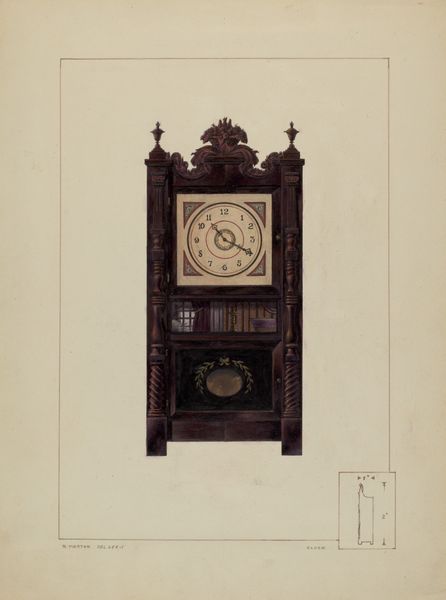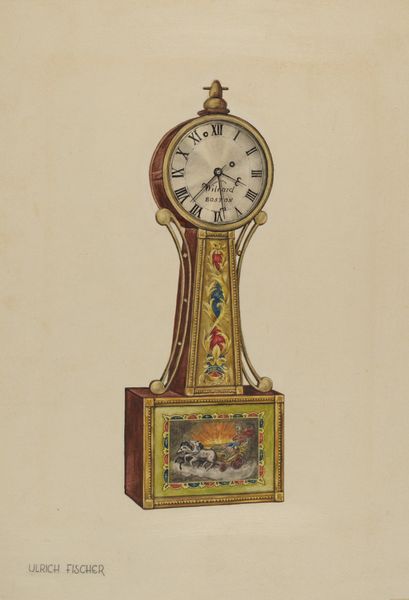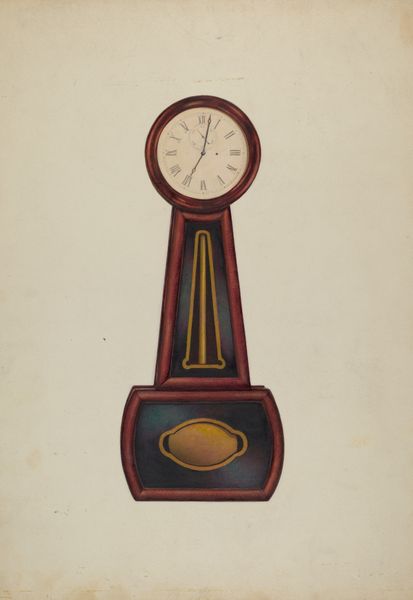
drawing, watercolor
#
drawing
#
watercolor
#
watercolour illustration
#
decorative-art
Dimensions: overall: 35.7 x 26.4 cm (14 1/16 x 10 3/8 in.) Original IAD Object: 7'6"high
Copyright: National Gallery of Art: CC0 1.0
Editor: So, here we have Geoffrey Holt's "Grandfather Clock Dial" from 1936, made with watercolor and drawing. The aged effect and careful rendering of the clock face feel both nostalgic and a little eerie to me. How do you interpret this work? Curator: Well, I see this as more than just a quaint depiction of a clock. Consider the cultural moment: 1936, the tail end of the Depression. There’s a keen interest in Americana at this time, a desire to reconnect with a simpler past. A grandfather clock represents tradition, family, stability, but this image isolates the dial. Editor: Interesting. It’s like a fragment of that tradition. Why just the dial, though? Curator: Perhaps to emphasize the preciousness of time during such uncertainty. Also, notice "Beach & Ward, Hartford" at the top, it grounds the work in a specific place and likely refers to a clockmaking business. This local reference taps into the rising interest in regional identity spurred by projects like the WPA Federal Art Project that sought to valorize everyday American life. Editor: So, it's less about time ticking away and more about place and a sense of local identity? Curator: Precisely. It’s about asserting a connection to place, to a local craft tradition, during a period when the future felt particularly precarious. How do you see that watercolor contributing to the reading of the piece? Editor: It gives it a softer, less industrial feel than you might expect. More personal, maybe? Curator: Exactly. It adds a layer of intimacy. Rather than being a grand symbol of status, this clock transforms into a sign of communal roots, artistic sensibility and historicization, particularly valuable given the anxieties of the era. Editor: I see it now, thanks. I went from seeing a decorative piece to understanding it as an echo of larger cultural concerns of its time. Curator: Indeed, it's amazing how an everyday object can reflect significant societal shifts, as art helps to make tangible a specific experience in time.
Comments
No comments
Be the first to comment and join the conversation on the ultimate creative platform.
